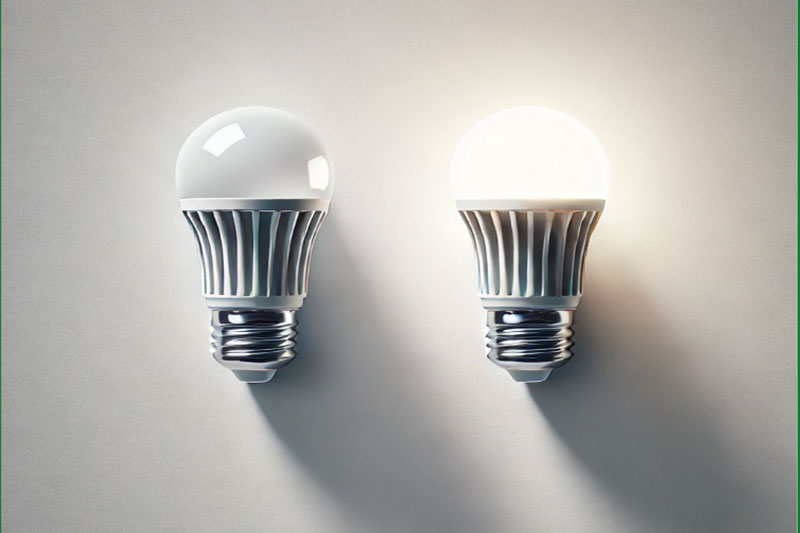The Surge Of Secondary Replacement Demand: A New Era For Led Lighting
The global LED lighting industry is entering a pivotal phase marked by a significant trend: the rise of secondary replacement demand. With millions of LED lamps and luminaires installed over the last decade, particularly between 2014 and 2016, many of these products are now nearing the end of their operational lifespans. As these units begin to dim or fail, the need for replacements is driving substantial market growth, which is expected to peak between 2025 and 2028. Understanding this trend is crucial for businesses and consumers looking to stay ahead in the evolving global LED market.
What is Secondary Replacement Demand?
Secondary replacement demand refers to the phase where LED products, initially adopted for their energy-saving capabilities and long lifespans, begin to reach the end of their effective life and need to be replaced. Unlike the initial adoption phase—where the focus was on replacing traditional incandescent or fluorescent lighting—this wave centers on upgrading existing LED installations. For example, LED lamps installed in 2014 are now approaching the end of their lifespan, typically around 10 to 15 years, making replacements a key driver of market activity.
Why is This Trend Important?
- Sustained Market Growth: The replacement of aging LEDs is set to be one of the largest growth drivers for the industry. As businesses, homeowners, and municipalities seek to maintain lighting quality and efficiency, the demand for LED replacement solutions continues to grow. This sustained demand helps stabilize the market, even as new installations slow down in more mature regions like North America and Europe
- Opportunity for Technological Upgrades: With advancements in LED technology, replacing older LED models allows users to benefit from higher energy efficiency, better color rendering, and improved integration with smart home systems. This upgrade cycle is an opportunity for businesses to promote smart LED lighting solutions that offer superior performance and seamless integration with IoT-based lighting control systems.
- Focus on Sustainability and Energy Efficiency: Replacing older LED models with newer, more efficient versions can significantly reduce energy consumption, contributing to global efforts towards sustainability and carbon reduction. This is particularly relevant as many governments implement stricter regulations to phase out less efficient lighting technologies, encouraging a faster transition to 100% LED adoption
Key Factors Driving Secondary Replacement Demand
- Longevity of Initial Installations: LEDs are known for their long lifespan, but like all technologies, they eventually degrade. The initial wave of LED adoption, driven by the need for energy savings, is now transitioning to a phase where these products require replacement. This is especially true in early adopter markets like Europe and parts of Asia.
- Declining Costs of LED Products: The cost of LED products has decreased over the years, making it more affordable for businesses and homeowners to invest in replacements. As the initial high prices of LED units continue to fall, it becomes easier to justify replacing old models with new, more efficient ones, further driving the market.
- Regulatory Push for Energy Standards: Around the world, many governments are enforcing stricter energy performance standards to phase out outdated lighting technologies. For instance, the European Union has implemented new regulations under the Ecodesign Directive, while countries in Africa and Southeast Asia are introducing standards that favor energy-efficient LED lighting. This regulatory environment is a key factor in accelerating the transition to LED retrofitting and replacements.
Benefits for Businesses and Consumers
For businesses in the LED lighting industry, the rise of secondary replacement demand represents a crucial opportunity. Companies can focus on educating their customers about the benefits of upgrading to newer LED models, emphasizing energy efficiency and cost savings. Additionally, offering retrofitting solutions and smart lighting systems can attract consumers looking to enhance their existing setups.
Consumers can also see this as a chance to improve their lighting environments. Upgrading to the latest LED models can bring substantial energy savings, better light quality, and the ability to integrate with smart home devices. This is especially beneficial for commercial spaces, where maintaining optimal lighting conditions can impact productivity and ambiance.
Preparing for the Replacement Wave
As the global LED lighting market continues to evolve, the focus on secondary replacement demand is set to shape the industry’s trajectory over the next few years. For businesses, understanding this shift is essential to capture new market opportunities. By offering innovative solutions that meet the replacement needs of consumers, companies can maintain growth while contributing to global sustainability goals.
For consumers, the shift towards LED replacement solutions provides a timely opportunity to refresh their spaces with the latest lighting technology, ensuring both cost savings and an improved lighting experience. This new era underscores the lasting impact of LED technology and its potential to continue driving positive change in the lighting industry.
Next article
Syska LED Lights Faces Insolvency Proceedings as NCLT Mumbai Admits Plea
